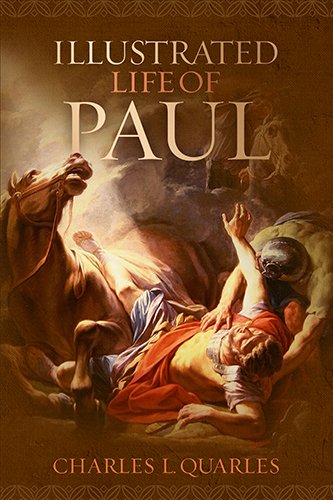Of the making of books about Paul there is no end, but that doesn’t mean there don’t continue to be valuable ones produced. In fact, I am planning on doing a second updated version of my own Paul Quest book with a collaborator before long, but for now, I have two books to suggest to you which are both entry level texts on Paul, surveying his life, letters, and his thought. Both are beautifully illustrated and with useful maps. One is a little under 300 pages and one is right at 400 pages. The shorter one costs about 25 new plus shipping on Amazon, the longer one about 32 plus shipping. The former is in paperback or Kindle, the latter is in hardback or Kindle. The former is by a single author, Charles Quarles at Southeastern Baptist in Wake Forest N.C. the latter is by two authors at a bigger Baptist school, Baylor in Waco, Tx. namely by Todd Still and Bruce Longenecker. The former is more of an entry level college textbook, the latter is more of a seminary Intro textbook with more detail and better bibliography. The former is published by B+H, the latter by Zondervan. If I had to pick just one for my own Asbury seminary students, I go with Still and Longenecker. Not surprisingly the former book does less interacting with Biblical scholarship, less addressing of critical issues than the bigger book. Having said that the Quarles book reads better for the lay person or entry level college student.
I would always stress that picking a book to study Paul with depends on the audience for whom the book was intended in the first place, and the audience that you want to share it with as well. If you are looking for something for use as a college Intro text for your average Christian college student, then Still and Longenecker is probably a bit much, too highbrow and detailed. The Quarles book is better at this level and for lay people’s study as well, especially if it is not a goal to expose the audience initially to the spectrum of scholarly opinions about Paul and his letters and thought world. But if the latter is important, then Still and Longenecker are to be preferred.
I will say however, that it isn’t really adequate to raise critical issues in a textbook like this without at least beginning to provide some answers to them. For example, it’s not all that helpful to say ‘some scholars think that some of Paul’s letters are pseudonymous’ without turning around and saying: 1) why, 2) and providing some counter balancing reasons why they might not be right. It’s not enough to expose the audience to a variety of views. Views that would not be familiar to the entry level seminary students, or would trouble them need to be discussed, not just mentioned as one view amongst many.
When it comes to textbooks, I do not recommend students buying the Kindle edition just to save a few bucks, UNLESS you have a way of annotating and taking notes in those books. Kindlized books are difficult to deal with when you need to flip back and forth between sections and do some comparing and contrasting or right practice answers to questions at the end of chapters. Kindle is fine for reading novels seriatim from start to finish, not fine for textbooks that you need to use in various ways.














